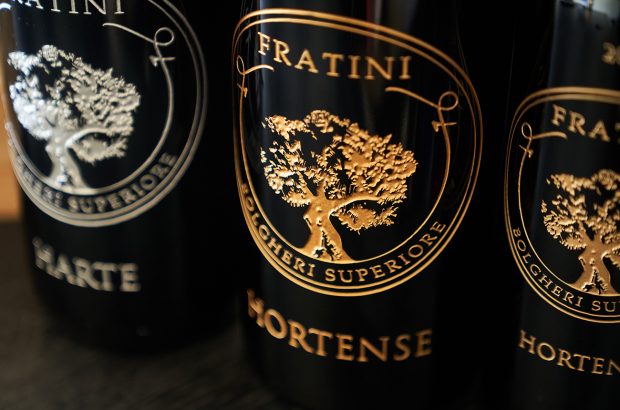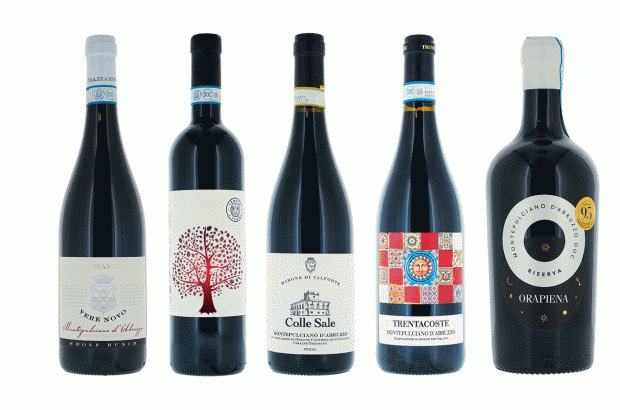Sherry Christmas!
They think me mad, those people. Those people who ask interminably, what is my favourite wine. Those people who, through no fault of their own, have never drunk a fabulously cool, effortlessly bone-dry manzanilla with a plate of freshly-caught prawns. Those people who know nothing of the perfumed, all-consuming nutty richness of an old oloroso or the subtle idiosyncrasies of a palo cortado, and who have never plunged naked (metaphorically speaking) into the velvet-black oubliette which is venerable Pedro-Ximénez.
‘Sherry,’ I reply. Intake of breath, brain runs sepia-tinted memories of ancient relatives and sticky brown liquid, youthful over-indulgence at Aunt Maud’s wedding, country vicar coming round after church on Christmas morning, dusty old bottle left over from last year… ‘How long does sherry keep once the bottle is opened?’ is the second-favourite question. ‘About 20 minutes on a good day.’ Sherry is the most sociable of drinks. Let’s quit out of the British December for a moment and click on an Andalucian July in Seville or Córdoba or Madrid. Young people, out to enjoy themselves on a summer Saturday, meet for tapas at a local bar – olives and ham, béchamel croquettes, cheese from La Mancha, freshly sliced, locally grown tomatoes in oil and sherry vinegar, and copitas of cold, cold, cold fino or manzanilla. The conversation is that of young people everywhere – tonight’s gig, tomorrow’s party, the latest boutique, the newest sounds, and another copita, please, before the credit cards start to take a beating on the calle Mayor. There are other trendy drinks, of course – Ballantine’s Scotch whisky and Larios gin are front-runners – but you wouldn’t do much shopping after a couple of those in Spanish-sized measures. Manzanilla and fino are the ‘hip’ drinks that make the world go round and, most importantly, they’re drinks to be shared.
Know your Sherry styles
Home at Christmas
Back to Britain and the December we’re enduring at the moment. Forget that old stuff about sherry being only an apéritif – it’s much more than that. New technology in the wineries means that finos and manzanillas can be exported at 15% alcohol by volume (abv) which is barely stronger than Australian Chardonnay or a South American Cabernet Sauvignon. It’s a food wine – if you can eat it with a dry white wine, you can eat it with fino or manzanilla – and if it’s spicy, herby, garlicky or oily then so much the better. Try fino with Thai prawns or a chicken curry. They will think you mad, but you’ll know better.
Except that you probably won’t, because the pub and restaurant trade in the UK has, for the most part, not the faintest idea about sherry. You’ll know that restaurants typically add 100% to the purchase price of all the wines on their list – some a great deal more. You may not know that the whisky or gin you buy in your local pub is likely to have been marked up by 600% (£2 a measure on a bottle costing £10 and containing 30 measures). Sadly, sherry comes in for the same treatment. You can pay £2.50 for a measure (12 out of a bottle) of sherry which values the bottle at £30 – probably something you could buy at your local supermarket for £5. In addition, it’s nearly always warm, old, dusty and standing up on the top shelf under a neon tube. And if you ask to buy a bottle rather than a glass, they’ll probably go into complete management-meltdown. Is it any wonder that those sepia-tinted memories are so strong?
At home, however, you have a choice. The youngest and freshest wines may be anything up to seven or eight years old and cost about £7 (compare that with the value-for-money of any other white wine of similar age) and although, of course, they make a splendid apéritif, they can be a great accompaniment to that Christmas Eve supper of cheese, pork pie, salad, cooked meats and, yes, even pickled onions.
But sherry is not just cool finos. One of the most rewarding but hardest to find is a good, old amontillado. Technically this is a great fino which has been aged for several years more – typically nine to 15 but often much longer. Most commercially available amontillado, however, is a mix of sweet and dry wines with a bit of colouring wine and sweetening syrup to sell under a supermarket own label for £X.99 a bottle – truly ghastly and more than enough to put any intelligent wine-drinker off ‘sherry’ for life.
The real thing is bone-dry, pungent, aromatic, and probably between £10 and £20 a bottle. You should try it with plain roast turkey on Christmas Day – it’s one of gastronomy’s great combinations. It’s also good as an apéritif; just as dry but more mellow and nuttier. Indeed, it could be the appropriate stuff with which to toast Her Maj during the Queen’s speech.
Palo Cortado
The maverick in the sherry herd is palo cortado. I won’t bore you with the history, but it’s a wine which started out looking as if it would become a fino but then underwent a kind of vinous sex-change and became an oloroso. Palo cortados vary hugely, from the flirtatiously off-dry to the aromatically promiscuous; every one an individual. Since the wine effectively self-selects itself out of the mainstream sherry system you never quite know what you’re going to get, but as there’s no commercial version you can at least be sure that it’s the genuine article. Keep a bottle for special friends at Christmas. The others probably won’t appreciate it.
Oloroso
Oloroso, too, is a relatively safe bet, since the ghastly cobbled-together commercial versions call themselves ‘cream’ and can easily be avoided. Your basic oloroso (the word means ‘aromatic’ or ‘fragrant’) evolves as dry as an amontillado but has a natural underlying richness which comes to the fore as it reaches maturity. Dry oloroso is one of the world’s most complex wines, with a pungent, aromatic nose and flavours of nuts, raisins, black treacle, molasses, cigar-box spices and cinnamon – while remaining dry. In Spain they drink it with well-hung roast meat and game but that is, perhaps, a bit adventurous for us. But do try a glass with the plain-roast turkey.
Some of the best olorosos are 40 or 50 years old and sweetened with natural PX (see below). These are among the world’s greatest sweet wines. If ever wines were destined to go with Christmas pudding they are these, but beware – they tend to be about 20% abv… and more than £20 a bottle.
A German soldier called Pieter Siemens walked into a village in Andalucia one day in the middle-ages with a vine in his hand. He told the credulous villagers that he had brought them the fabled Riesling of Germany and, in return, all he wanted was board and lodging. The vine was not, of course, the Riesling and ended up being named after the soldier – Pedro-Ximénez in the Spanish orthography (PX for short). It produces enormous natural grape-sugar and today the grapes are very likely to be laid out in the sun on mats after harvesting to concentrate those sugars – anything up to 500 grams per litre (1,000 grams per litre of sugar is a bag of sugar). The resultant wine is as soft as velvet, as black as midnight, as rich as Croesus and as voluptuous as…(insert female fantasy of your choice: Mae West, Dolly Parton, Nurse Gladys Emmanuel).
A good deal of PX wine is used for blending with old olorosos to make the richest, most complex dessert and after-dinner wines (with the Christmas pud or with nuts, cheese and the Queen’s speech, perhaps). Pure PX is rare and expensive but it’s one of those wines which fills every nook and cranny of the taste experience. A small glass will suffice and it might even upstage the Christmas pudding (but give it a try just in case). In Spain they order rich dairy ice-cream, dig a hole in the top of it and pour in the wine. It works. And for Santa? Well, he is driving after all. Maybe just a very small glass of that ghastly pale cream your brother-in-law brought round last year. Put the rest in a bowl for Rudolph.















